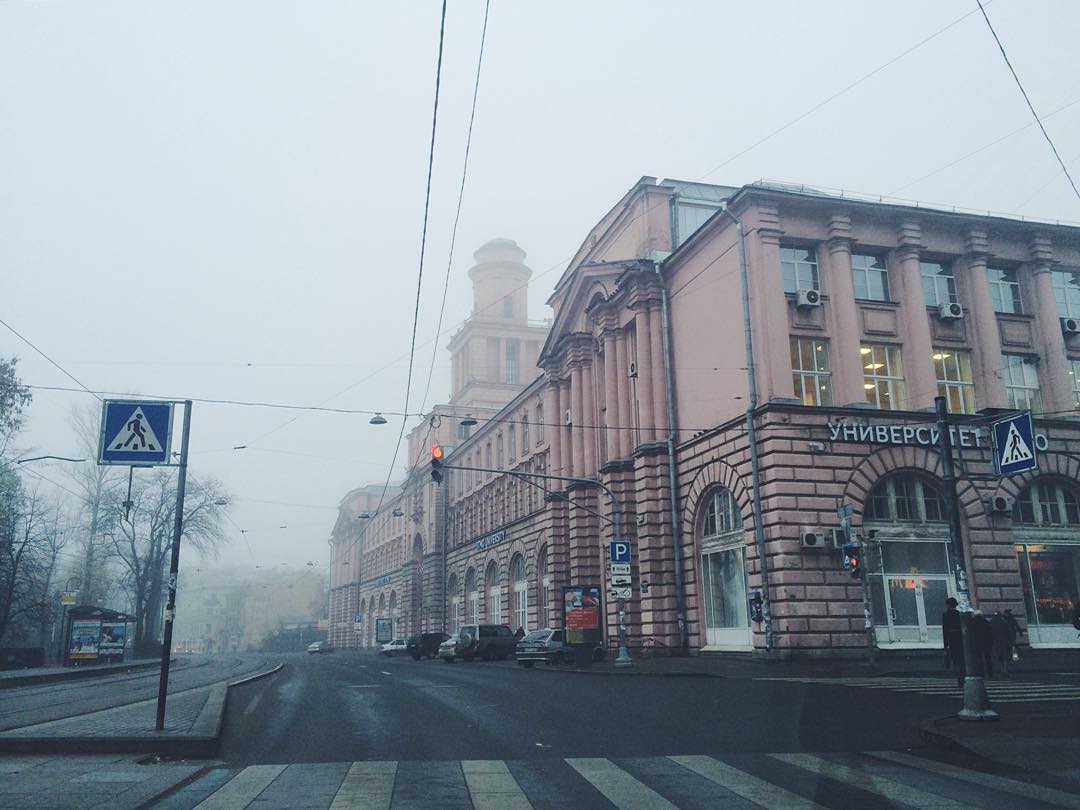The Department of chemistry, which was the basis of the Department of Physics and technology of Optical Communication (later the Department of light Guide Photonics), was part of the first 14 departments of LITMO, formed in 1930. In 30-60 years the Department worked as a part of faculty of exact mechanics, the known Russian scientist-chemist Professor S. A. Shchukarev headed Department.
In 1976 the Department became a part of engineering-physical faculty. Igor meshkovsky, Vladimir Zemsky and later Valerii Pashin from FTI were invited. Ioffe, and then Oleg Popkov, and Yurii Turlakov of LTI them. Of the Leningrad city Council and Alexander Novikov of GOI im. Vavilov. Head of the Department was elected Igor meshkovsky, who leads the Department to this day. During these years, the Department proposed and implemented a new curriculum for the course "General and physical chemistry", which was based on the latest achievements of science and teaching methods.
At that time, the Department developed two scientific and technical areas:
- fiber optic technology;
- creation of new composite optical materials.
With the initiative of I. K. Meshkovsky in 1982, for the first time in the USSR, the Department began to train engineers in the specialization "Fiber and integrated optics"; the department was renamed to Department of Physical chemistry, fiber and integrated optics. The Department engaged S. Mironov of the SE "Far" and S. Danilov of GOI im. Vavilov. On the basis of the Department were held the first in Russia developments on the production technology of optical fiber, optical bundles, various fiber-optic devices and systems.
Whith the success of the work of the head of the Department, academician of the Russian Academy of engineering Sciences Professor I. K. Meshkovsky, professors B. I. Zemsky and A. F. Novikov in 1986 there was a scientific school in the field of Photonics of dispersed and nonlinear media. New composite optical materials based on porous silicate glass with molecules of organic and inorganic substances embedded in the pores have been created, on the basis of which active elements of solid-state tunable dye lasers have been created for the first time, and many fiber-optic and photonic sensors and micro-optical elements have been developed. Associate Professor G. B. Deineka developed work on computer modeling of physical and chemical processes.
In 1998, due to the development of telecommunication systems and the high demand for specialists in fiber-optic communication Department of the first in St. Petersburg began to train engineers in the specialty "Physics and technology of optical communication", and since 2003-the release of engineers in this specialty. The Department was invited by I. A. Sokolov from LLC "Opten", Yu Zingerenko of JSC "novel Il", A. V. Borisenko from GUT them. Bonch-Bruevich, S. V. kukhtin of Metrocom LLC.
Since the early 2000s, the Department has been developing in the field of fiber-optic sensors. Especially successful was the cooperation with JSC "Concern" Central research Institute "Electropribor", started in 2005., in the field of precision fiber-optic gyroscopes, as well as navigation devices based on them. This work had a significant impact on the further direction of scientific activity of the Department.
In 2013, on the basis of the University and the Department of light-Guide Photonics, a research center for light-Guide Photonics was established. The activity of this center is closely connected with the developments of the Department.
For more effective realization of scientific potential, development of creative thought and successful implementation of technical solutions at the Department created scientific laboratories equipped with modern equipment:
Laboratory of Assembly and alignment of light guide Photonics devices;
Laboratory of programmable electronics;
Laboratory fiber optics Photonics;
Laboratory of modeling and programming.
At the moment, the laboratory staff of the Department together with research centers in Russia and abroad are engaged in the development and improvement of technologies for:

Fiber optic gyroscope;
Fiber optic voltage/current sensor;
Fiber optic hydrophone;
Fiber optic sonar antenna;
Sensors on Bragg gratings.
More information about all the projects of the Department you can find in the Section " projects of the Department"
Managers and employees of the Department are very sensitive to the development of scientific developments. Nowadays, the Department of light Guide Photonics does not stand still. The range of scientific interests of the Department is inextricably linked with modern trends in the field of instrumentation, optics and telecommunications technologies.
